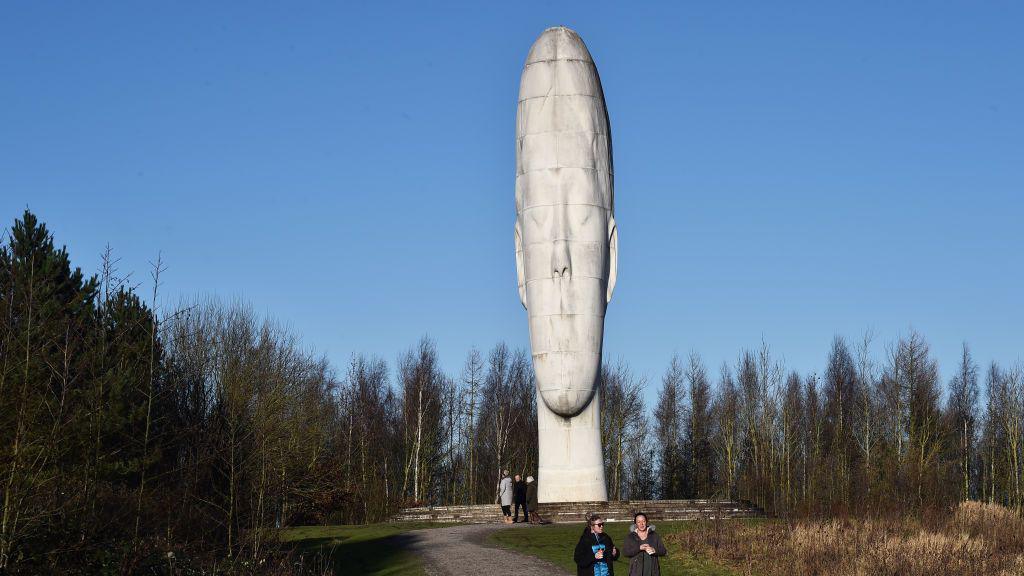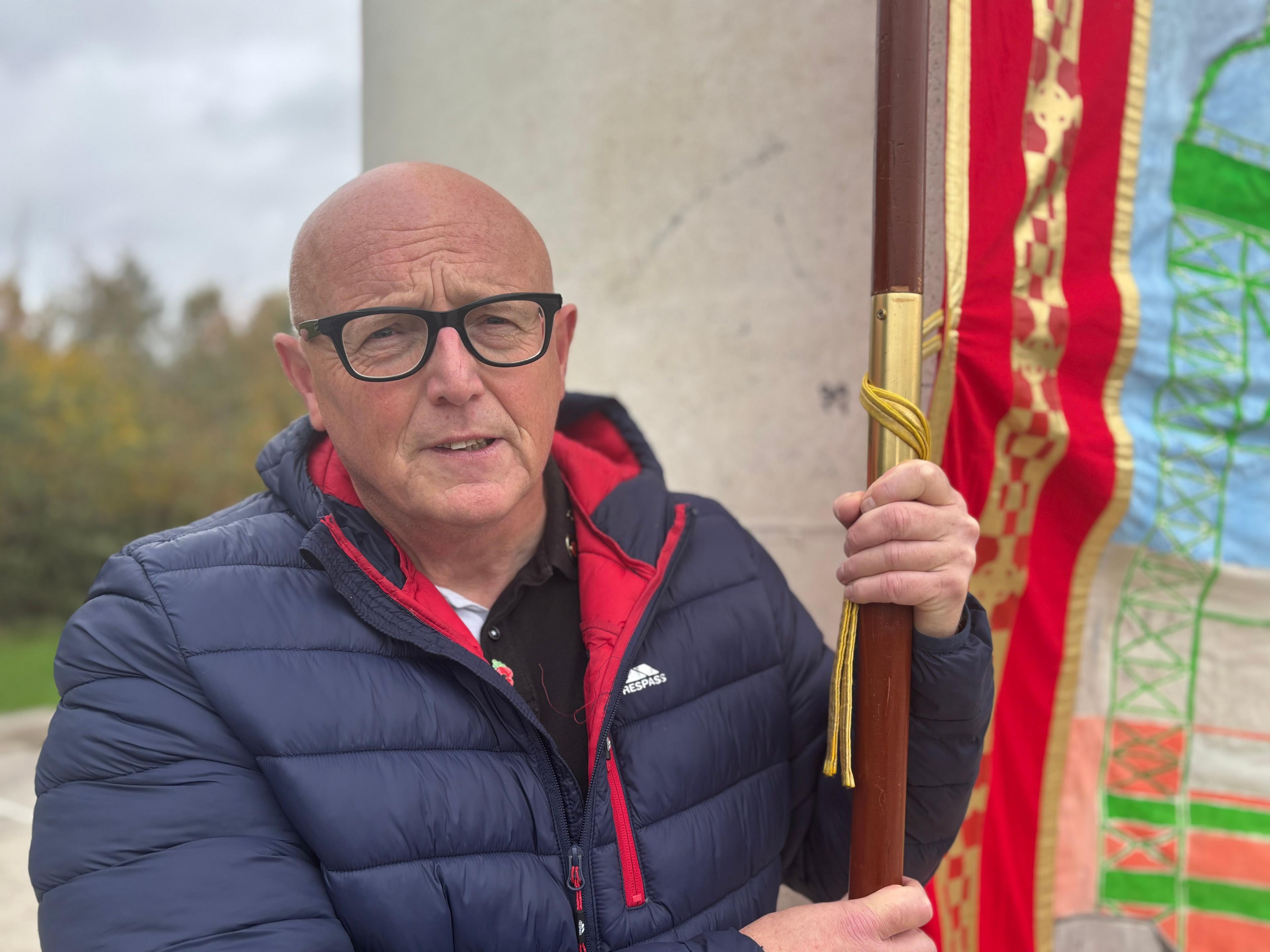'Statue to miners treated like an embarrassment'

The Dream sculpture used to be visible to thousands of drivers on the M62 motorway every day
- Published
A group of ex-miners who were instrumental in bringing the Liverpool city region's biggest public art work to St Helens say it is being "hidden away" rather than celebrated.
Dream, which portrays a young girl's head looking out across the M62 motorway, stands on the former spoil heap of the Sutton Manor colliery.
But, rather than being Merseyside's equivalent of Gateshead's Angel of the North statue, fans of the art work say it is largely ignored, and they want that to change.
Gary Conley worked underground at the colliery for 18 years until the pit closed in 1991 and says the "lack of respect" for the work is "scandalous" and that St Helens "should be capitalising on it and making more" of it.
In 2009, Mr Conley was one of a group of former miners who helped create Dream with artist Jaume Plensa.
But now he feels that the sculpture and the legacy of mining in St Helens is being buried.
"We're hiding it. We hide it with trees. It's like it's an embarrassment to us at times."
He added: "We should build a whole industry on the back of Dream, not try to hide its worth."

Gary Conley feels the legacy of mining in St Helens is being buried
One of Mr Conley's main complaints is that Dream can no longer be seen from the motorway.
Forestry England, which maintains the woodland surrounding the artwork, said it would "look for opportunities to open up new views of the sculpture during periodic woodland management activity".
Jim Housely, of the Northwest Miners Heritage Association, said the preservation and promotion of the sculpture and its links to mining was "personal" for him, as his grandfather and father before him had all worked down the pit.
Jim said Dream was "fantastic" but that "it needs looking after".
He said it was frustrating the attraction offered visitors no refreshments or even a toilet. He said: "We are trying to push for a cafe, parking, it's a wonderful place to bike around, walk your dog, but it could be much better."

The sculpture stands on the former spoil heap of the Sutton Manor colliery
Another ex-miner, Jeff Bannister, said: "Sometimes we just feel as though the mining industry is something that people want to erase from history, we don't seem to get the recognition for what was done here for many, many years."
He added: "My father worked here, my grandfather worked here, so it means a lot."
In its 1960s heyday, 1,500 miners came through the gates of the colliery every day. It produced 600,000 tonnes of coal.
Today the noise and dirt is gone, the sound of miners' work boots replaced by the gentle crunch of walkers' wellies on the pathways that wind up to the sculpture.

Jeff Bannister followed the footsteps of his father and grandfather when he became a miner
St Helens Council, which owns Dream, said it was "incredibly proud to be the birthplace of this artwork".
It added: "Dream is a prominent feature in the promotion of the borough, and is often used as part of marketing campaigns."
In 2021, it was featured in the Netflix drama Stay Close, which the miners said brought renewed interest to the site from tourists, which then was not capitalised on.
Public art expert Laurie Peake, who worked on some of the region's most recognisable projects like Liverpool's Superlambanana and Another Place on Crosby beach, said the authorities were missing a trick when it came to using public art as a marketing tool.
She said such art could act as a "good Trojan horse that brings other benefits with it". She said Dream should be "a gateway" to St Helens, and that public artworks were "flags that say, hey, we're here and we're places where imagination and art can take place, and great places to come to."
Get in touch
Tell us which stories we should cover on Merseyside
Listen to the best of BBC Radio Merseyside on Sounds and follow BBC Merseyside on Facebook, external, X, external, and Instagram, external. You can also send story ideas via Whatsapp to 0808 100 2230.
Related topics
- Published20 August 2010